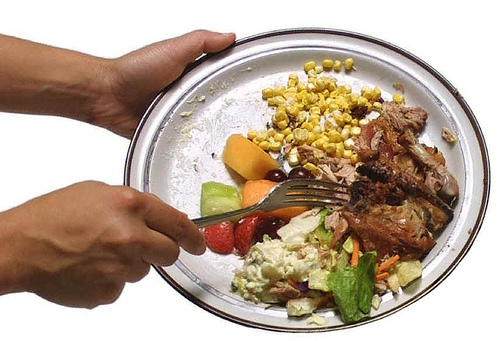The U.S. wastes a stunning amount of food — 40 percent of what we produce, according to Jonathan Bloom, author of American Wasteland. That’s way above the already-staggering global average of one third. That means that 40 percent of the energy, water, and fuel we put into farming goes straight into the trash. All in all, Bloom says, “2 percent of all U.S. energy goes to food we’re throwing away.”
And this waste is built into the system. Farmers are forced to toss crops that aren’t up to aesthetic standards, and often have to plow under whole fields if the market value isn’t high enough to pay for labor. Given that they’ll often plant backup fields in case it’s a low-yield year, this means that farmers are almost never harvesting everything they plant. Getting to market isn’t the end of the wastefulness, either; distributors will dump anything they can’t sell. And that’s all before it even gets to your refrigerator, where you KNOW you let it rot in favor of eating Chipotle every day for a week. (Okay, sure, not YOU. Those other guys. The ones you’re judging right now.)
Bloom, who is clearly a master of the soundbite, says we’re “aiding climate change from our kitchen trashcans.” But he has a few ideas on how we can mitigate the problem:
- Outlaw organic matter in landfills. You buy it, you sell it — or eat it, or compost it, but you can’t just dump it. Norway and Nova Scotia have already done this.
- Provide incentives for farmers to harvest everything they grow (to balance out all the DISincentives).
- Beefed-up “gleaning programs,” which involve distributing unmarketable but perfectly good crops to food banks, school cafeterias, and so forth.
- Public awareness campaigns. Our recommended billboard slogans: “For goodness’ sake, there are children starving in Africa” and “How can you have any pudding if you don’t eat your wheat?”


